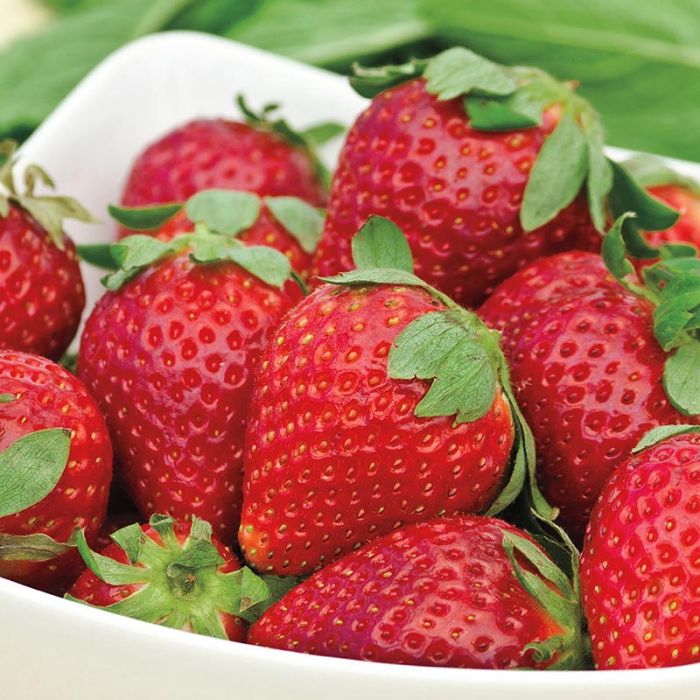Flowering Perennials Native to Minnesota
Native plants provide shelter and food for wildlife and support pollinators. The experts at Gertens offer guidance to perennials native to Minnesota.



Out of stock
Coming soon, still growingA premier everbearing variety producing large, firm berries with very good flavor.
Elevate your landscaping with Gertens' unmatched variety of shrubs! Selecting the right shrubs for your backyard can enhance its beauty and functionality. Consider factors like sunlight, soil type, and mature size when choosing shrubs. For sunny areas, flowering shrubs like roses or hydrangeas can add color and charm. In shady spots, opt for shrubs like azaleas or hostas. Evergreen shrubs provide year-round interest and privacy, while deciduous shrubs offer seasonal color changes. At Gertens, we offer a wide selection of shrubs to suit every backyard need.
Albion Strawberry | Fragaria 'Albion'
Height: 12 inches
Spread: 24 inches
Sunlight: full sun to part shade
Hardiness Zone: 3b
Other Names: Garden Strawberry
Brand: Gertens
Description:
Sweeter than most strawberries because of its high sugar content; high yields of conical berries with firm texture and excellent flavor all season long; vigorous, and shows good disease resistance; tends to remain evergreen in frost free areas
Edible Qualities
Albion Strawberry is a perennial that is typically grown for its edible qualities, although it does have ornamental merits as well. It produces red heart-shaped berries which are usually ready for picking from late spring to early fall. This variety is considered an everbearing type of strawberry, which means that it will repeatedly produce fruit across most of the season. The berries have a sweet taste and a firm texture.
The berries are most often used in the following ways:
Features & Attributes
Albion Strawberry features dainty white cup-shaped flowers with lemon yellow eyes along the stems from mid spring to early summer. Its serrated round compound leaves remain dark green in color throughout the season. It features an abundance of magnificent red berries from early to late summer.
This is an open herbaceous perennial with a spreading, ground-hugging habit of growth. Its relatively fine texture sets it apart from other garden plants with less refined foliage. This is a high maintenance plant that will require regular care and upkeep, and should not require much pruning, except when necessary, such as to remove dieback. It is a good choice for attracting birds to your yard, but is not particularly attractive to deer who tend to leave it alone in favor of tastier treats. Gardeners should be aware of the following characteristic(s) that may warrant special consideration;
Aside from its primary use as an edible, Albion Strawberry is sutiable for the following landscape applications;
Planting & Growing
Albion Strawberry will grow to be about 12 inches tall at maturity, with a spread of 24 inches. It grows at a fast rate, and under ideal conditions can be expected to live for approximately 10 years. As an herbaceous perennial, this plant will usually die back to the crown each winter, and will regrow from the base each spring. Be careful not to disturb the crown in late winter when it may not be readily seen! This is a self-pollinating variety, so it doesn't require a second plant nearby to set fruit.
This plant can be integrated into a landscape or flower garden by creative gardeners, but is usually grown in a designated edibles garden. It does best in full sun to partial shade. It does best in average to evenly moist conditions, but will not tolerate standing water. It is particular about its soil conditions, with a strong preference for rich, alkaline soils. It is somewhat tolerant of urban pollution. Consider applying a thick mulch around the root zone in both summer and winter to conserve soil moisture and protect it in exposed locations or colder microclimates. This particular variety is an interspecific hybrid. It can be propagated by division; however, as a cultivated variety, be aware that it may be subject to certain restrictions or prohibitions on propagation.
Albion Strawberry is a good choice for the edible garden, but it is also well-suited for use in outdoor pots and containers. Because of its spreading habit of growth, it is ideally suited for use as a 'spiller' in the 'spiller-thriller-filler' container combination; plant it near the edges where it can spill gracefully over the pot. Note that when growing plants in outdoor containers and baskets, they may require more frequent waterings than they would in the yard or garden. Be aware that in our climate, most plants cannot be expected to survive the winter if left in containers outdoors, and this plant is no exception. Contact our experts for more information on how to protect it over the winter months.
| Gerten Grown Plants | Gerten Grown Plants |
|---|---|
| Bloom Time | June, July, August, September, October |
| Sun Preference | Full-Sun |
| Mature Height (Range) | under 2 feet |
| USDA Hardiness Zone | 4, 5, 6, 7 |
| Common Family Name | Strawberry |